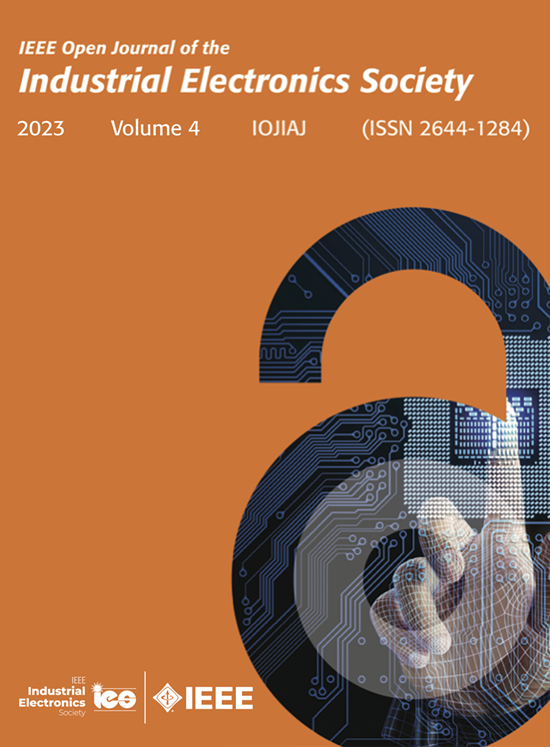A-Source-Based Half-Bridge Inverter: Analysis, Design, and Implementation
IF 4.3
Q1 ENGINEERING, ELECTRICAL & ELECTRONIC
IEEE Open Journal of the Industrial Electronics Society
Pub Date : 2025-03-27
DOI:10.1109/OJIES.2025.3574190
引用次数: 0
Abstract
This article introduces a new half-bridge inverter that employs Z-source technology to achieve a high boost factor without blocking high voltage on passive or active devices. This configuration includes the coupled inductors shaped in the A-source form, which is why the proposed topology is referred to as an A-source-based half-bridge inverter. The operation modes of the proposed topology are analyzed based on the states of diodes and switches in each state. The boost factor, average currents, and voltages related to the passive components are calculated, and equations are derived to estimate the size of required inductors and capacitors and the ratings of the switches and diodes. Furthermore, the topology’s efficiency is analyzed through power loss studies. A comparison of the proposed topology with past configurations reveals its advantages and disadvantages, demonstrating its capacity to provide a high boost factor while having superior specifications than some of them. Finally, an experimental sample of the proposed topology is tested in the laboratory to ensure proper operation and to compare its power losses and efficiency with other past works.基于a源的半桥逆变器:分析、设计与实现
本文介绍了一种新的半桥逆变器,它采用z源技术来实现高升压因数,而不会阻塞无源或有源器件上的高压。这种配置包括以a源形式形成的耦合电感,这就是为什么所提出的拓扑结构被称为基于a源的半桥逆变器。基于二极管和开关在每种状态下的状态,分析了所提出拓扑的工作模式。计算了与无源元件相关的升压因数、平均电流和电压,并推导了公式,以估计所需电感和电容器的尺寸以及开关和二极管的额定值。此外,通过功耗研究分析了该拓扑的效率。将所提出的拓扑结构与过去的配置进行比较,揭示其优点和缺点,证明其能够提供高升压因数,同时具有比其中一些更高的规格。最后,在实验室中测试了所提出的拓扑结构的实验样本,以确保其正常运行,并将其功率损耗和效率与其他过去的工作进行比较。
本文章由计算机程序翻译,如有差异,请以英文原文为准。
求助全文
约1分钟内获得全文
求助全文
来源期刊

IEEE Open Journal of the Industrial Electronics Society
ENGINEERING, ELECTRICAL & ELECTRONIC-
CiteScore
10.80
自引率
2.40%
发文量
33
审稿时长
12 weeks
期刊介绍:
The IEEE Open Journal of the Industrial Electronics Society is dedicated to advancing information-intensive, knowledge-based automation, and digitalization, aiming to enhance various industrial and infrastructural ecosystems including energy, mobility, health, and home/building infrastructure. Encompassing a range of techniques leveraging data and information acquisition, analysis, manipulation, and distribution, the journal strives to achieve greater flexibility, efficiency, effectiveness, reliability, and security within digitalized and networked environments.
Our scope provides a platform for discourse and dissemination of the latest developments in numerous research and innovation areas. These include electrical components and systems, smart grids, industrial cyber-physical systems, motion control, robotics and mechatronics, sensors and actuators, factory and building communication and automation, industrial digitalization, flexible and reconfigurable manufacturing, assistant systems, industrial applications of artificial intelligence and data science, as well as the implementation of machine learning, artificial neural networks, and fuzzy logic. Additionally, we explore human factors in digitalized and networked ecosystems. Join us in exploring and shaping the future of industrial electronics and digitalization.
 求助内容:
求助内容: 应助结果提醒方式:
应助结果提醒方式:


